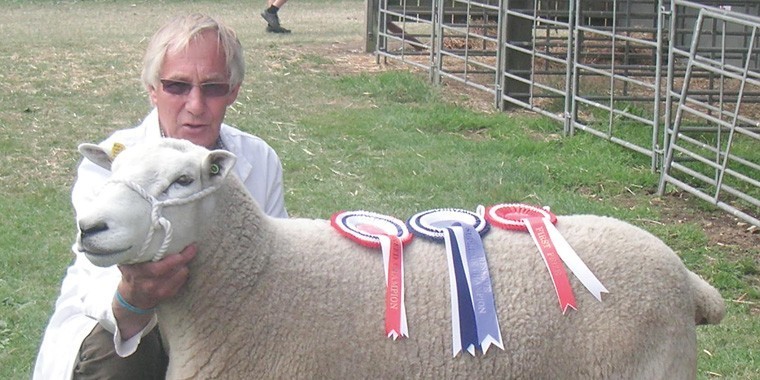For a long time we have produced a lot more lambs in the UK than we consume, relying on exports to maintain producer incomes; with somewhere in the region of 30% of what we produce being sold overseas. So what has gone wrong?
The main contributor to the decrease is almost certainly the volume of New Zealand (NZ) lamb coming into the country. Historically we have imported NZ lamb, to both balance UK supplies and to help maintain throughput in UK processing plants. The supermarkets tell us that consumers don’t want hoggets and that NZ lamb can ensure a year round supply of new season lamb.
Quite how a lamb on 31 December suddenly becomes a hogget on 1 January baffles me. I always thought that a lamb was a lamb until it cut its first permanent incisors at about a year old when it became a hogget, but supermarkets and their buyers seem to have a different definition. I’m sure that if they really knew what they were eating most supermarket customers would enjoy the fuller flavor of hogget meat.
This year however Asda and Tesco are the main offenders and have been using NZ lamb as their main product and using UK supplies to balance shortfalls (Morrisons is on the contrary very loyal to UK producers sourcing almost 100% of their lamb from the UK). Imports on NZ lamb for March this year were up by 35% on March 2014. Even now when high volumes of UK new season lambs are coming onto the market, NZ product continues to dominate many supermarket shelves.
The reason is that NZ lamb is cheap. Much of NZ has been facing drought conditions so many lambs have been slaughtered early as NZ producers have been desperate to unload lambs before grass supplies run out. In addition to the glut in supply, which should run out fairly soon, the strength of sterling also makes imports relatively cheaper; a double bonus for the supermarkets – and it is UK producers that are picking up the tab.
The strength of sterling is also having a significant impact on exports. Only a couple of years ago £1 worth of UK lamb cost continental buyers a little over 1.1 euros. Now it is costing them around 1.4 euros, a really significant increase and not surprising that there is some significant resistance on the part of buyers across the Channel to buying UK lamb.
With the European market accounting for more than 80% of our exports this has put a lot of pressure on the export trade. As a result we get squeezed in the middle, between increased imports and reduced exports and at a time when historically we should be enjoying relatively buoyant prices.
On the bright side, the high volume of lamb slaughterings in NZ will almost certainly come to an end fairly soon. But with a proposed referendum on our continued European Union membership in the next couple of years, casting some doubt over our long term future in Europe, we will almost certainly see some uncertainty around the future of UK sheep meat exports to Europe.
A month ago the main political parties were all making claims in their manifestos about supporting UK agriculture and encouraging increased consumption of UK produce. How things change once the elections are over. Talk is cheap and easy, doing something positive to support UK farming takes a little more commitment and some affirmative action, both of which could be a long time coming.
As an industry how fit are we in the sheep sector to deal with low prices, increasing uncertainty and potentially, greater price volatility? In general, we are probably not as fit as we should be. None of us are in a position to exert any control over the prices we receive for our lambs, our culls or our wool. We are price takers, not price makers and the only means we have of influencing our sheep margins is by either increasing output per hectare or per ewe (the two are not the same) or reducing our production costs. The latter almost certainly affords significantly more opportunities than the former.
Just a final thought to leave you with. In a recent telephone conversation a friend who now manages a farm in the South West was telling me how he has calculated the cost per lamb on the ground this year. The cost per lamb out of his Mules was £8; the cost per lamb out of his Romney ewes was £1.30 per lamb. Look at current lamb prices! Think about it!




